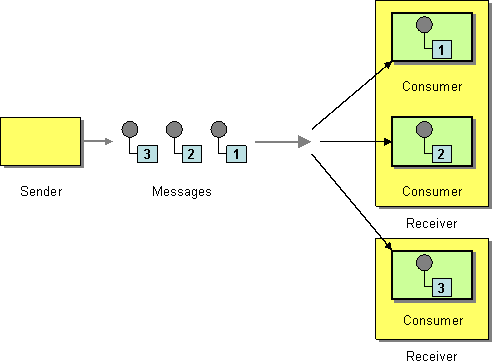Refer to the exhibit.

A Mule application is deployed to a multi-node Mule runtime cluster. The Mule application uses the competing consumer pattern among its cluster replicas to receive JMS messages from a JMS queue. To process each received JMS message, the following steps are performed in a flow:
Step l: The JMS Correlation ID header is read from the received JMS message.
Step 2: The Mule application invokes an idempotent SOAP webservice over HTTPS, passing the JMS Correlation ID as one parameter in the SOAP request.
Step 3: The response from the SOAP webservice also returns the same JMS Correlation ID.
Step 4: The JMS Correlation ID received from the SOAP webservice is validated to be identical to the JMS Correlation ID received in Step 1.
Step 5: The Mule application creates a response JMS message, setting the JMS Correlation ID message header to the validated JMS Correlation ID and publishes that message to a response JMS queue.
Where should the Mule application store the JMS Correlation ID values received in Step 1 and Step 3 so that the validation in Step 4 can be performed, while also making the overall Mule application highly available, fault-tolerant, performant, and maintainable?
- Both Correlation ID values should be stored in a persistent object store
- Both Correlation ID values should be stored In a non-persistent object store
- The Correlation ID value in Step 1 should be stored in a persistent object store. The Correlation ID value in step 3 should be stored as a Mule event variable/attribute
- Both Correlation ID values should be stored as Mule event variable/attribute
Answer(s): C
Explanation:
* If we store Correlation id value in step 1 as Mule event variables/attributes, the values will be cleared after server restart and we want system to be fault tolerant.
* The Correlation ID value in Step 1 should be stored in a persistent object store.
* We don't need to store Correlation ID value in Step 3 to persistent object store. We can store it but as we also need to make application performant. We can avoid this step of accessing persistent object store.
* Accessing persistent object stores slow down the performance as persistent object stores are by default stored in shared file systems.
* As the SOAP service is idempotent in nature. In case of any failures , using this Correlation ID saved in first step we can make call to SOAP service and validate the Correlation ID.
Top of Form
Additional Information:
* Competing Consumers are multiple consumers that are all created to receive messages from a single Point-to-Point Channel. When the channel delivers a message, any of the consumers could potentially receive it. The messaging system's implementation determines which consumer actually receives the message, but in effect the consumers compete with each other to be the receiver. Once a consumer receives a message, it can delegate to the rest of its application to help process the message.

* In case you are unaware about term idempotent re is more info:
Idempotent operations means their result will always same no matter how many times these operations are invoked.

Bottom of Form